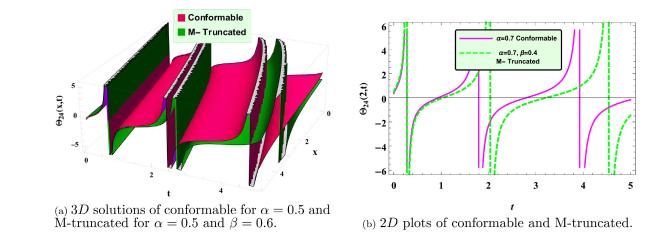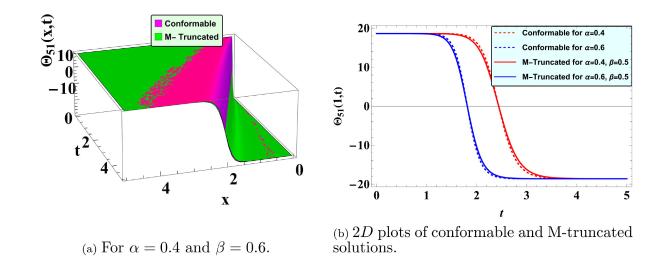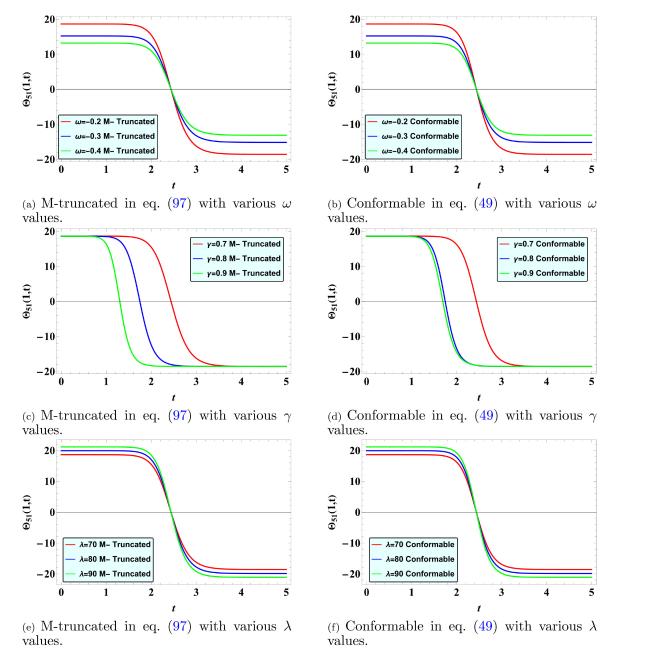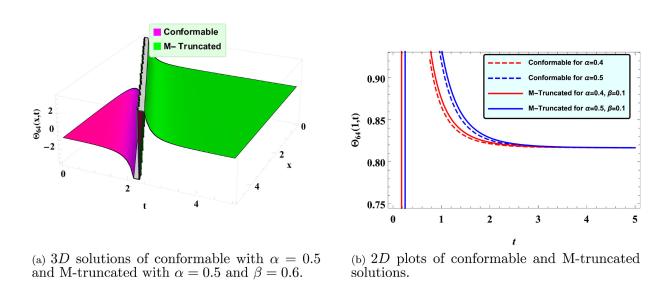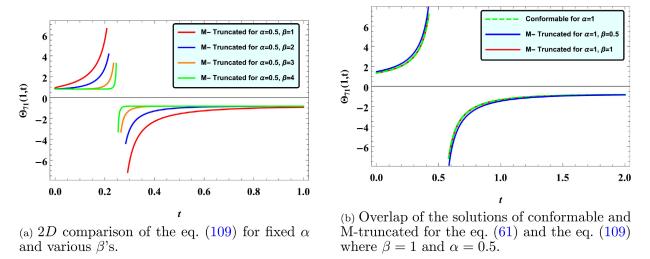This paper mainly aims to derive the analytical solutions of the SMCH equations with conformable and M- truncated derivatives and compare the obtained solutions. To our best knowledge, an extended rational
and
methods
[44],
[45] have been successfully applied to MCH equation including various derivative operators for the first time. The considered methods were used for the perturbed nonlinear Schrodinger equation
[44], Boussinesq-like equations,
[46], nonlinear fractional
function
[47], coupled nonlinear Schrdinger equation
[48], Hirota-Satsuma coupled KdV equation
[49], coupled Maccaris system
[50] and Radhakrishnan-Kundu-Lakshmanan equation
[51]. Some studies on SMCH equation which we consider are modified simple equation method
[30], exp-function method on the fractional type
[52], Hes semi-inverse method
[53], Darboux transformation and multi-soliton solution
[54], exp
-expansion method
[55], novel
expansion method
[56], sine-gordon expansion method
[57], new auxiliary method
[58] and unified solver method
[59].


